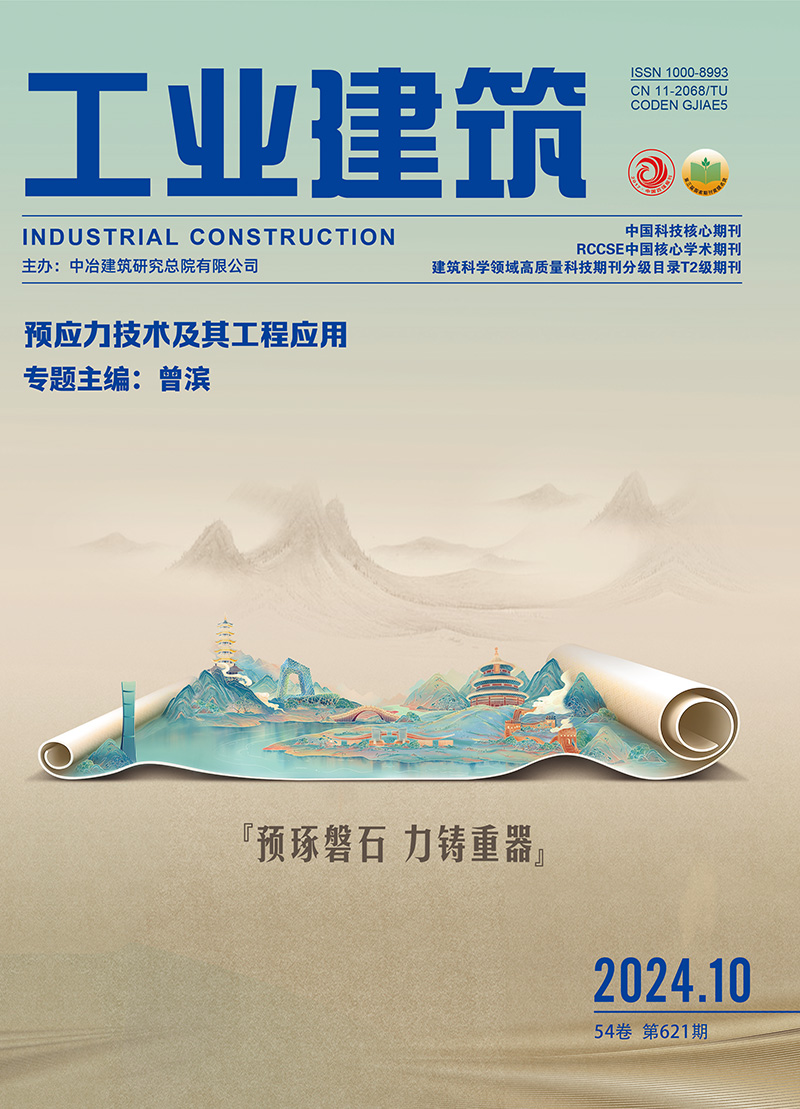| [1] |
过镇海, 时旭东. 钢筋混凝土原理和分析 [M]. 北京:清华大学出版社有限公司, 2003.
|
| [2] |
龚洛书, 惠满印, 杨蓓. 砼收缩与徐变的实用数学表达式 [J]. 建筑结构学报, 1988 (5): 37-42.
|
| [3] |
KIM S M, ABU AL-RUB R K. Meso-scale computational modeling of the plastic-damage response of cementitious composites [J]. Cement and Concrete Research, 2011, 41(3): 339-358.
|
| [4] |
AYDIN A C, ARSLAN A, GüL R. Mesoscale simulation of cement based materials’ time-dependent behavior [J]. Computational Materials Science, 2007, 41(1): 20-26.
|
| [5] |
HUBLER M H, WENDNER R, BAZANT Z P. Comprehensive database for concrete creep and shrinkage: analysis and recommendations for testing and recording [J]. ACI Materials Journal, 2015, 112(4): 547-558.
|
| [6] |
HAVLÁSEK P, JIRÁSEK M. Multiscale modeling of drying shrinkage and creep of concrete [J]. Cement & Concrete Research, 2016,85:55-74.
|
| [7] |
王岩. 细观尺度下不同应力水平作用的高强混凝土徐变过程数值模拟[D]. 重庆:重庆交通大学, 2016.
|
| [8] |
LAVERGNE F, SAB K, SANAHUJA J, et al. Investigation of the effect of aggregates’ morphology on concrete creep properties by numerical simulations [J]. Cement & Concrete Research, 2015, 71: 14-28.
|
| [9] |
LI S G, LI Q B. Method of meshing ITZ structure in 3D meso-level finite element analysis for concrete [J]. Finite Elements in Analysis and Design, 2015, 93: 96-106.
|
| [10] |
WANG Y, XU Q, CHEN S. Approaches of concrete creep using mesomechanics: numerical simulation and predictive model [J]. Modelling and Simulation in Materials Science and Engineering, 2019, 27(5), 055012.
|
| [11] |
张望喜, 谢宏涛, 王雄, 等. 基于ABAQUS考虑钢筋影响的混凝土构件收缩徐变分析 [J]. 重庆大学学报(自然科学版), 2019, 42(11): 64-78.
|
| [12] |
LUTZ M P, MONTEIRO P J, ZIMMERMAN R W. Inhomogeneous interfacial transition zone model for the bulk modulus of mortar [J]. Cement and Concrete Research, 1997, 27(7): 1113-1122.
|
| [13] |
NEVILLE A, DILGER W, BROOKS J. Creep of plain and structural concrete[M]. Lonodn:Construction Press, Longman Group Ltd,1981.
|
| [14] |
BAŽANT Z P, TABBARA M R, KAZEMI M T, et al. Random particle model for fracture of aggregate or fiber composites [J]. Journal of Engineering Mechanics, 1990, 116(8): 1686-1705.
|
| [15] |
MEHTA P K, MONTEIRO P J. Concrete: microstructure, properties, and materials [M]. New York:McGraw-Hill Education, 2014.
|
| [16] |
XIAO J, LI W, CORR D J, et al. Effects of interfacial transition zones on the stress–strain behavior of modeled recycled aggregate concrete [J]. Cement and Concrete Research, 2013, 52: 82-99.
|
| [17] |
XIAO J, LI W, SUN Z, et al. Properties of interfacial transition zones in recycled aggregate concrete tested by nanoindentation [J]. Cement and Concrete Composites, 2013, 37(3): 276-92.
|
| [18] |
ZHU Z, CHEN H. Overestimation of ITZ thickness around regular polygon and ellipse aggregate [J]. Computers & Structures, 2017, 182: 205-218.
|
| [19] |
WANG Z, GU X, LIN F. Experimental study on mechanical performance of interface between mortar and aggregate in concrete [C]//Earth and Space 2010: Engineering, Science, Construction, and Operations in Challenging Environments. Honolulu,Hawaii,USA:2010: 3529-3536.
|
| [20] |
朱伯芳. 混凝土结构徐变应力分析的隐式解法 [J]. 水利学报, 1983(5):40-46.
|
| [21] |
WRIGGERS P, MOFTAH S O. Mesoscale models for concrete: homogenisation and damage behaviour [J]. Finite Elements in Analysis and Design, 2006, 42(7): 623-636.
|
| [22] |
BARNES B D, DIAMOND S, DOLCH W L. Micromorphology of the interfacial zone around aggregates in Portland cement mortar [J]. Journal of the American Ceramic Society, 1979, 62(1/2): 21-24.
|
| [23] |
HENRY G R, STEVEN C L. Thirteen years of deformations in Water Tower Place [J]. ACI Structural Journal, 1989, 86(2):182-191.
|
| [24] |
RADOVITZKY R, ORTIZ M. Tetrahedral mesh generation based on node insertion in crystal lattice arrangements and advancing-front-Delaunay triangulation [J]. Computer Methods in Applied Mechanics and Engineering, 2000, 187(3/4): 543-569.
|
| [25] |
PARTHASARATHY V, GRAICHEN C, HATHAWAY A. A comparison of tetrahedron quality measures [J]. Finite Elements in Analysis and Design, 1994, 15(3): 255-261.
|
| [26] |
MANZOLI O L, GAMINO A L, RODRIGUES E, et al. Modeling of interfaces in two-dimensional problems using solid finite elements with high aspect ratio [J]. Computers & Structures, 2012, 94: 70-82.
|
| [27] |
MANZOLI O L, MAEDO M A, BITENCOURT JR L A, et al. On the use of finite elements with a high aspect ratio for modeling cracks in quasi-brittle materials [J]. Engineering Fracture Mechanics, 2016, 153: 151-170.
|
| [28] |
庄茁. 基于ABAQUS的有限元分析和应用 [M]. 北京:清华大学出版社,2009.
|
| [29] |
HERRERA R, KINRADE S D, CATALAN L J J. A comparison of methods for determining carbonation depth in fly ash-blended cement mortars [J]. ACI Materials Journal, 2015, 112(2):287-294.
|
| [30] |
GAMBLE B, THOMASS L. The creep of concrete subject to varying stress[C]//Proceedings of the Proceedings of the Australian Conference on the Mechanics of Structures and Materials. Adelaide Australia: 1969.
|
| [31] |
L'HERMITE R G, MAMILLAN M, LEFèVRE C. Nouveax résultats de recherches sur la déformation et la rupture du béton [J]. Matériaux et Constructions,1965,2:35-41.
|


 Login
Login Register
Register E-alert
E-alert







 DownLoad:
DownLoad: